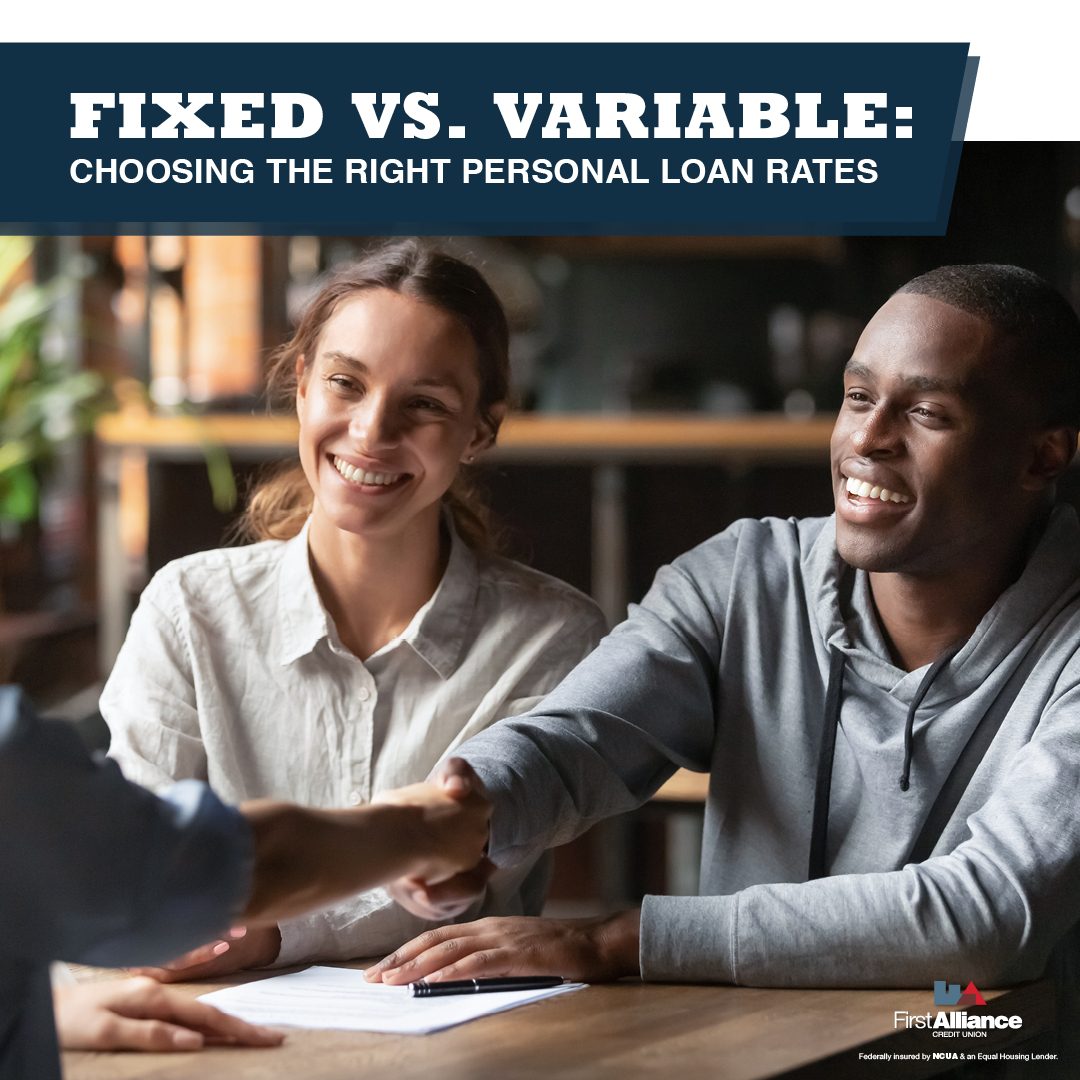When applying for a personal loan in the U.S., one of the most important decisions you’ll face is whether to choose a fixed or variable interest rate. Both options come with pros and cons — and the right choice depends on your financial goals, risk tolerance, and market trends.
In this blog, we’ll break down the difference between fixed and variable interest rates on personal loans, help you understand how they work, and guide you in choosing the option that’s best for you.
A fixed interest rate stays the same for the entire life of the loan. That means your monthly payments will remain consistent, regardless of changes in the economy or market interest rates.
- Predictable monthly payments
- Easier budgeting
- Protection from rising interest rates
- May start higher than some variable rates
- Less flexibility if rates drop significantly
💡 Example: You take out a $10,000 personal loan at a 9% fixed APR for 3 years. Your monthly payment and total interest remain constant throughout.
A variable interest rate (also called a floating or adjustable rate) can change over time based on a market index like the prime rate or LIBOR. Your monthly payment may go up or down depending on these fluctuations.
- Often lower initial rate than fixed loans
- Potential to save money if rates fall
- Payments can increase over time
- Harder to budget due to uncertainty
- Riskier during inflation or rising rate environments
💡 Example: You get a personal loan with a starting rate of 7%, but over the next year the rate rises to 10%, increasing your monthly payment.
| Feature | Fixed Rate Loan | Variable Rate Loan |
|---|---|---|
| Monthly Payment | Stays the same | Can fluctuate |
| Interest Rate Stability | Stable | Depends on market |
| Budgeting Ease | Easy and predictable | Less predictable |
| Starting APR | Typically higher than variable | Often lower initially |
| Risk Level | Low risk | Higher risk |
| Best For | Long-term planners, stable budgets | Short-term borrowers, rate-savvy users |
Here’s how to decide:
- You want predictable payments
- You’re borrowing for a longer term (3–7 years)
- You expect interest rates to rise
- You prefer financial stability over possible savings
- You plan to repay the loan quickly
- You expect rates to stay the same or drop
- You’re comfortable with risk and rate fluctuations
- You want to save on interest upfront
A lower variable rate at the start may seem attractive, but if rates increase, you could end up paying more in the long run.
📊 Example:
- $15,000 fixed loan at 9% APR for 5 years = ~$3,640 interest
- $15,000 variable loan starting at 7%, increasing to 11% = ~$4,200 interest over 5 years
This is why it’s crucial to run the numbers using different rate scenarios before choosing.
- Check the cap rate on variable loans (maximum interest allowed)
- Ask how often the rate can change (monthly, quarterly, annually)
- Use loan calculators to compare both options
- Consider your job stability, income, and ability to absorb higher payments
- If unsure, fixed rate loans offer peace of mind — especially in an uncertain economy
Both fixed and variable interest rate personal loans have their place, but choosing the right one depends on your personal circumstances. If you prefer certainty and long-term security, go fixed. If you’re financially flexible and focused on short-term savings, a variable rate might work in your favor.

